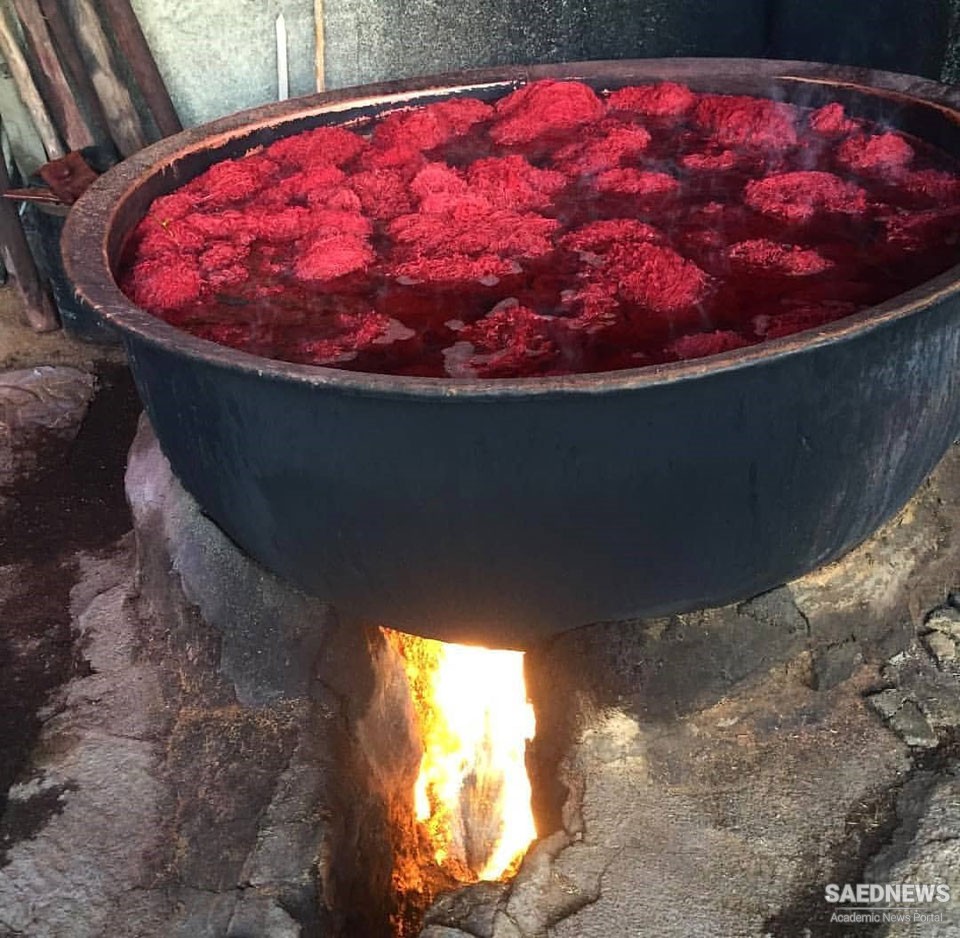Pazyrik carpet, discovered in Siberia, that belongs to the Achaemenid dynasty, has been made using colors yellow, red, blue, and green that proves the long history of dyeing in Iran. Safavid dynasty is known to have witnessed the development of dyeing and carpet handicrafts in the Islamic Era. Some of the colors that were used at that time are crimson red, blue, green, pale yellow, and orange, and what interesting is that the Safavid colors were very similar to the pigments that are used today.
Using their own creativity, the dyers can mix the pigments, making hues that are slightly different from each other. For example, two colors of violet and red are mixed to make a very bright magenta. Then by adding rich yellow pigments, it turns into persimmon orange.
The dyeing process is done in multiple steps. At first, the wool or silk is soaked in warm water for about 2 hours in order to be prepared for absorption. Then they are washed in 30-35 centigrade water and detergents, and later rinsed and dried. The next step is to add different types of alum known as green, white and black to nearly boiling water. Alum is a chemical sulfate that raises the absorption of pigments and the stability of color. The amount of alum and duration of this step depends mainly on the intended color. After this, the dyeing pot is raised to about 100 centigrade.
The yarns and the intended pigments are then mixed and boiled together for about an hour. Every five minutes the mixture is stirred using a wooden spatula. Later the dyeing pot is left so that its temperature decreases gradually. Finally, the yarns are dried in sunlight. In addition to carpets, traditional dyeing has been one of the oldest crafts of Qom and it has been remained popular until today.


 Chalangari: Traditional Iron Tools
Chalangari: Traditional Iron Tools














































